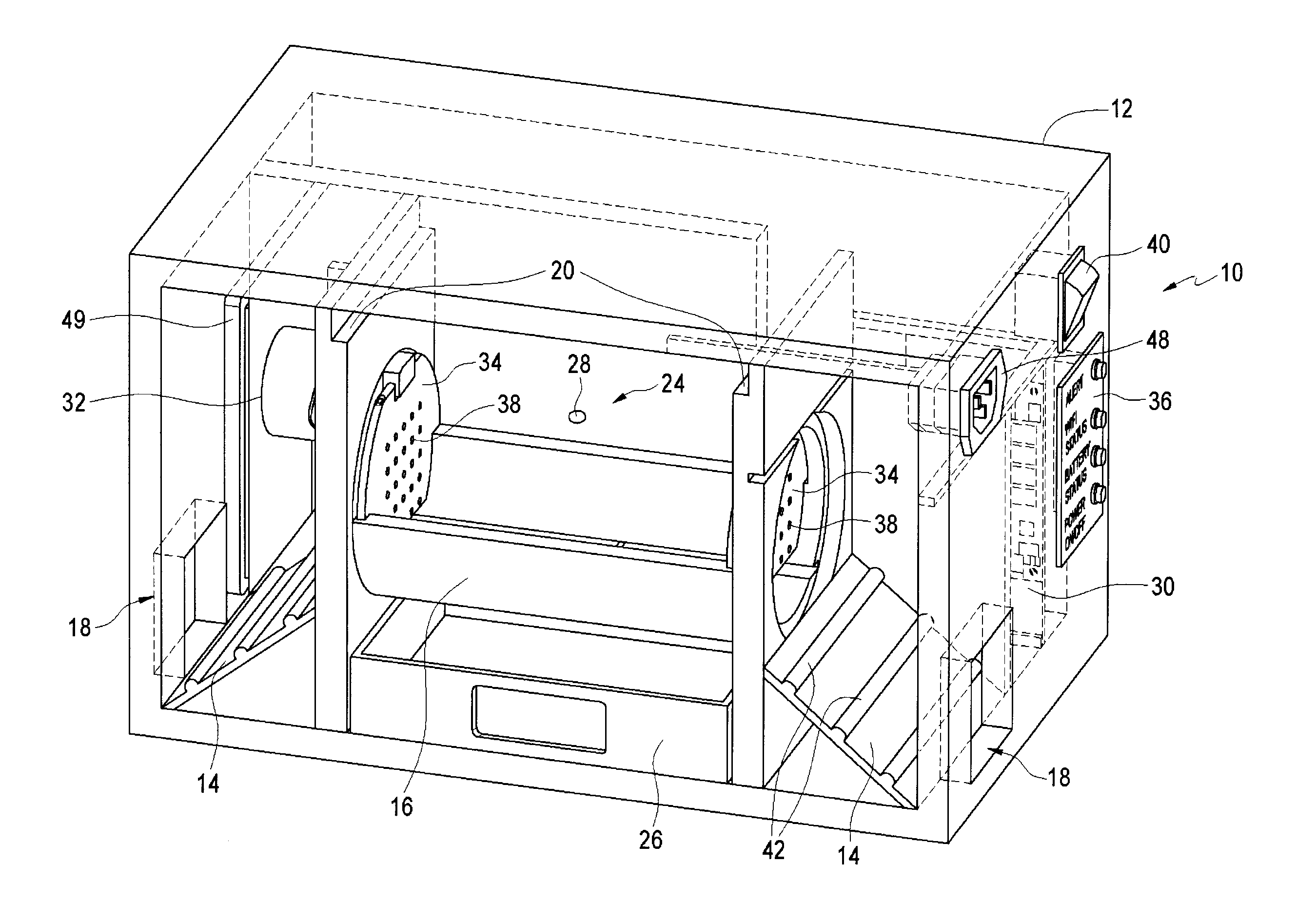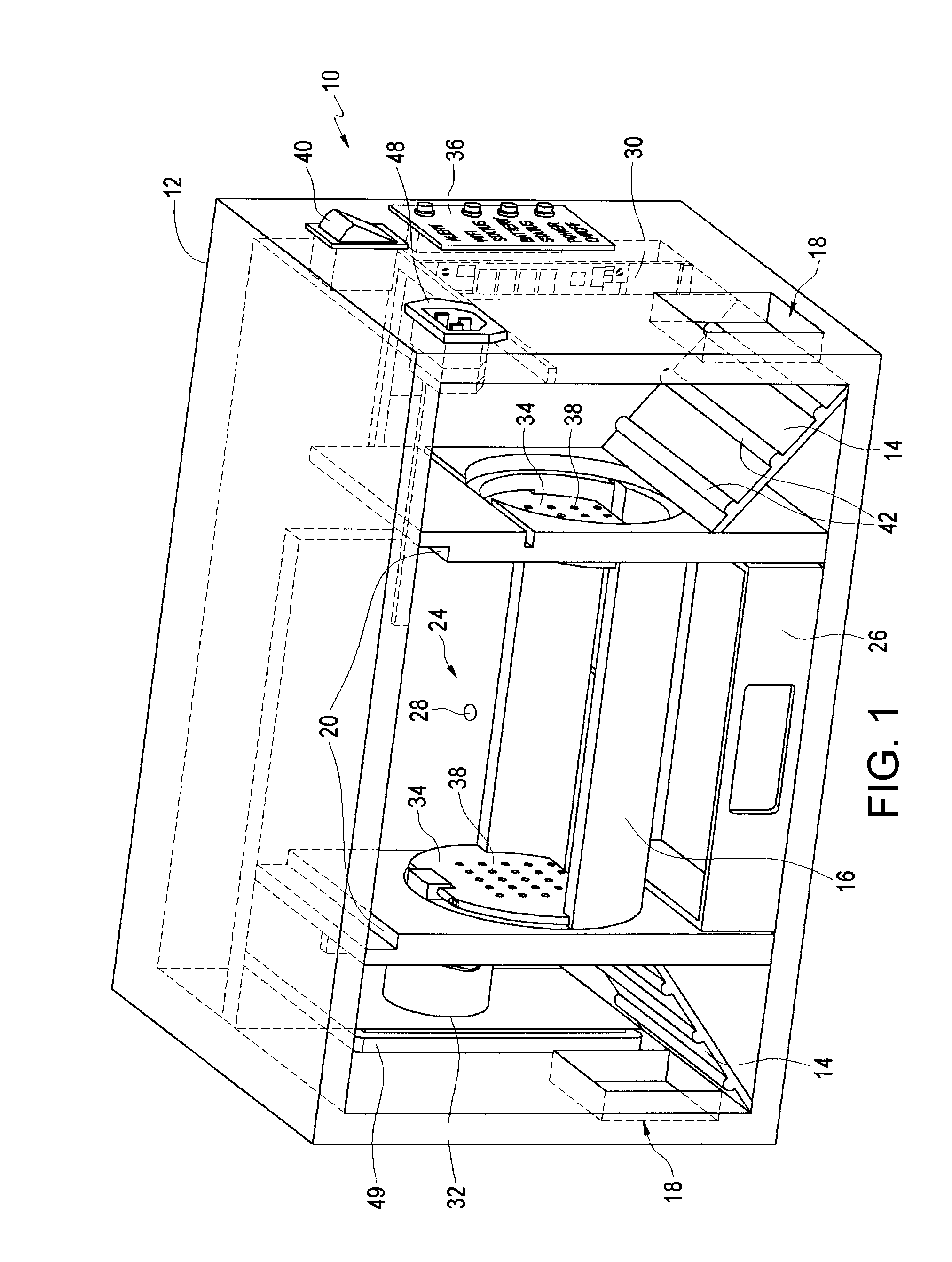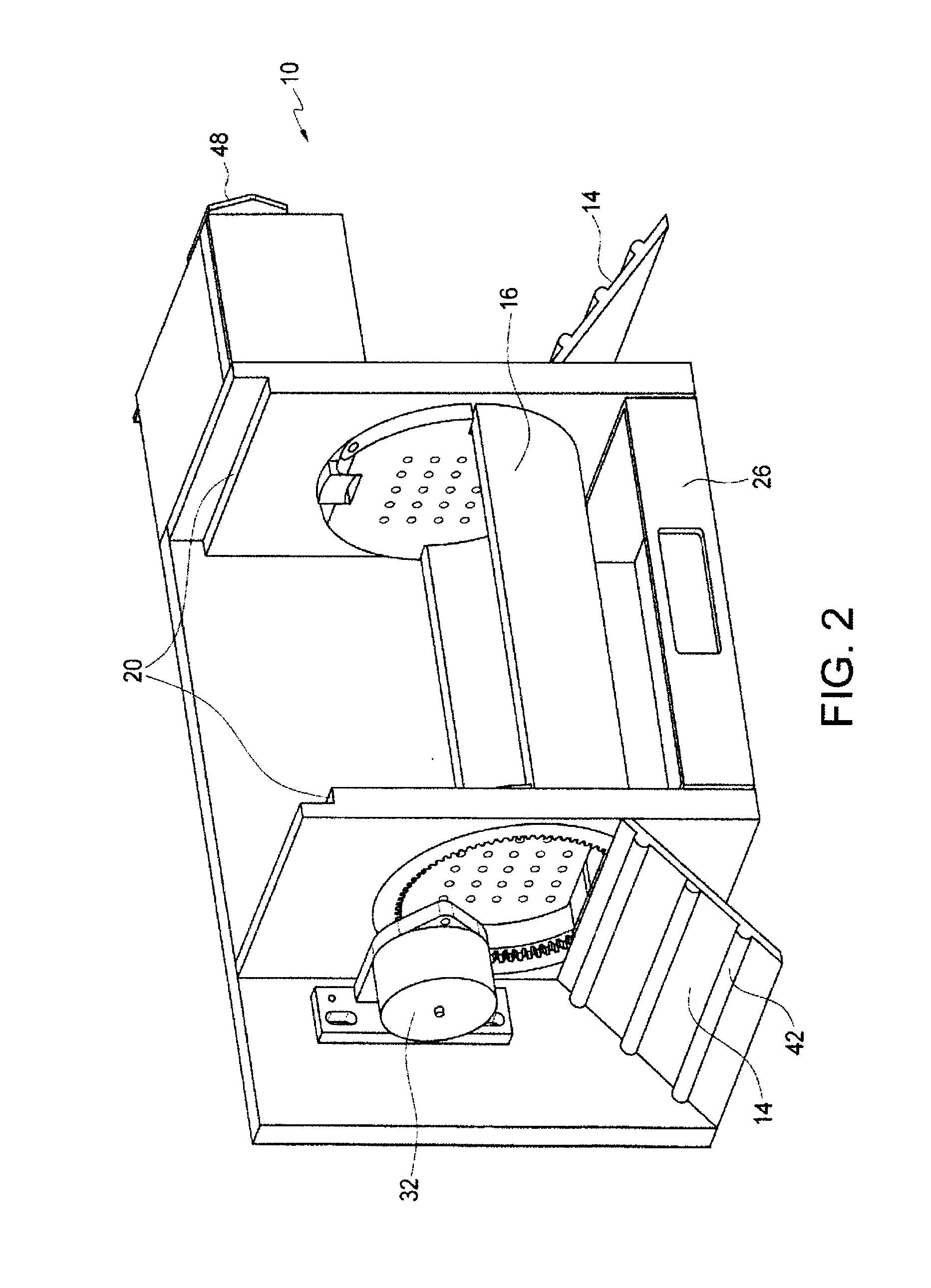Multiple-use vermin trap apparatus, method and system
a vermin trap and multi-use technology, applied in the field of animal traps, can solve the problems of reducing the breeding potential of rats, reducing the troublesome and economically damaging of mice, and reducing the use of aids, so as to achieve the effect of simple, effective and safe us
- Summary
- Abstract
- Description
- Claims
- Application Information
AI Technical Summary
Benefits of technology
Problems solved by technology
Method used
Image
Examples
Embodiment Construction
[0052]Referring now to the accompanying drawings, an embodiment of a vermin trap according to the present invention is illustrated.
[0053]Referring now in detail to FIGS. 1 and 2, a trap apparatus 10 according to the present invention is illustrated. The apparatus 10 comprises a housing 12 which incorporates two open entrances 18 and contains an interior path. The interior path in the illustrated embodiment consists of opposed ramps 14 and a rotatable passage 16 therebetween, such that vermin can enter the housing 12 from either entrance 18 and pass up one of the ramps 14 to the passage 16. The ramps are provided with ribs 42 to provide enhanced traction for the vermin. Bait retention means 20 are provided directly above the passage 16 and comprise ledges on which a bait tray can be positioned, with bait inserted therein; the bait tray can be provided with ventilation holes to help ensure adequate dispersal of the bait scent, as would be obvious to one skilled in the art. It is to be...
PUM
 Login to View More
Login to View More Abstract
Description
Claims
Application Information
 Login to View More
Login to View More - R&D
- Intellectual Property
- Life Sciences
- Materials
- Tech Scout
- Unparalleled Data Quality
- Higher Quality Content
- 60% Fewer Hallucinations
Browse by: Latest US Patents, China's latest patents, Technical Efficacy Thesaurus, Application Domain, Technology Topic, Popular Technical Reports.
© 2025 PatSnap. All rights reserved.Legal|Privacy policy|Modern Slavery Act Transparency Statement|Sitemap|About US| Contact US: help@patsnap.com



